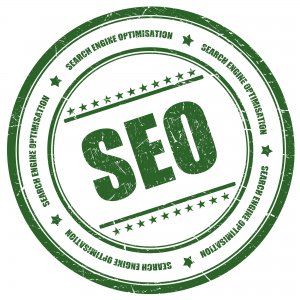 The major search engines Google and Bing are excellent sources of visitors to your website.
The major search engines Google and Bing are excellent sources of visitors to your website.
Google in particular is able to provide enough visitors, enquiries and sales to sustain most print businesses and make their website a worthwhile investment so it is essential that you pay attention to SEO.
SEO or search engine optimisation is both an art and a science and in this post we will be outlining a few techniques, tips and general pieces of advice to help you get started with optimising your website for the major search engines.
By and large, SEO can be divided into two categories; on-page optimisation and off-page optimisation. Both are required in order to fully-optimise your site and we will cover off the basics of each of these in this post.
On-page optimisation
Optimising the pages of your website involves the following:
- Technical SEO
- Keyword Research
- Content optimisation
- User experience optimisation
Technical SEO
This aspect of on-page optimisation involves taking care of the technical ‘housekeeping’ on your website which means you are ensuring the search engine spiders can access, crawl and index your website.
Keyword research
This aspect of on-page optimisation involves identifying the keywords which your prospective customers are using to search and find products and services that you offer. If you can optimise your website for visibility across these keyword terms then your chances of turning visitors into customers is greatly increased.
Content optimisation
Once you understand the keywords that your customers are searching for then you can tweak, rewrite and even create new content to ensure you are effectively targeting these terms.
User experience optimisation
This might sound like a job for your website designer but ever since Google announced their Panda update which is believed to relate the the quality and usefulness of a website, optimising the experience for your users has become an essential and integral part of SEO.
This doesn’t mean you necessarily need to change the design of your website, it can just mean targeting the right types of keywords to ensure the visitors who use those keywords and find your site can easily find the content that they are looking for.
It is also important you look at ways to reduce the bounce rate of your web pages (the number of people who arrive at your site and leave without progressing any further than the first page) as it is widely believed that Google is weaving user feedback metrics like bounce rate into how it ranks websites – with sites that have a high bounce rate dropping in the rankings in comparison to websites which are seemingly very useful for their users.
Off-page optimisation
- Link development
- Social media strategies
Off-page optimisation can seem like a much easier task as there are less things to worry about but in actual fact not only is off-page optimisation more important it is also a far more complex challenge because arguably you don’t have control over social media or who links to you.
Thankfully though there are things you can do to encourage links and improve your social media presence.
Link development or link building
It is often easy to get sucked into the belief that more = better but in the world of links, not all were created equal and it is very much about quality and relevance rather than quantity necessarily.
You can make some quick improvements with linkbuilding such as directory submissions, article submissions, social bookmarking and proactive guest posting and content exchange for links.
Social media
Although social doesn’t have a direct impact on rankings just yet, it is likely to have a much bigger impact as time goes by.
Looking at ways to encourage social interaction with your presences on Facebook, Twitter, LinkedIn and Google+ in order to drive traffic in the short term and longer term to ensure your rankings are secure should Google look to incorporate social media signals more heavily into the algorithm.